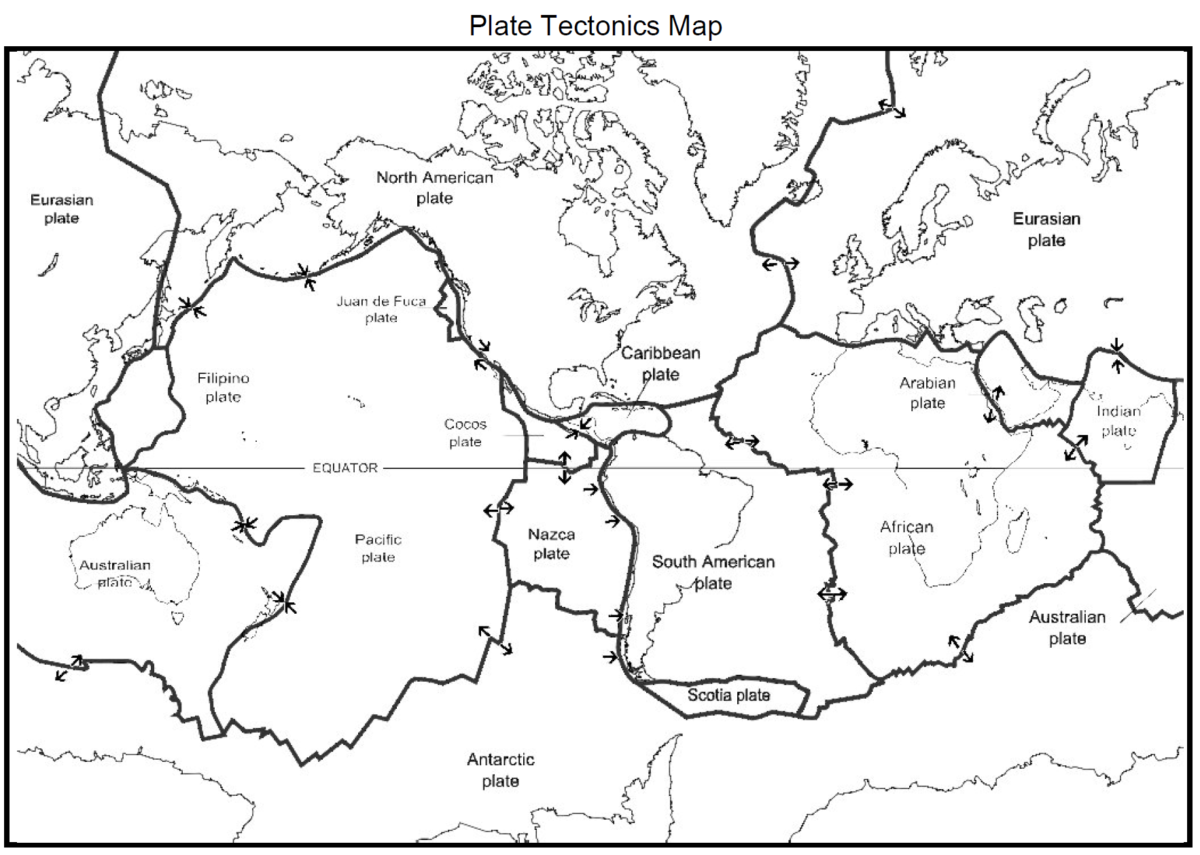This is one of the prompted writings I wrote in the summer of 2020 at Sunshine (online) summer camp.
Did you know that the Earth was once one giant supercontinent? Did you also know that in roughly a million years, the Earth will look completely different than it does today? Earth is a very complex sphere, always changing, so we know that Earth’s continents and oceans will not look the same in the future. What does the future have in store for our beautiful, blue planet?
Scientists have evidence that our planet will change in size and shape as time progresses, but they do not know what Earth looked like at its creation. Scientists predict that Earth will become one huge continent again with enough time. Millions of years from now, our world as we know it today will look very different.
We live on the Earth’s crust, which is made up of moving pieces of broken-up rock called tectonic plates. These plates have been moving and are still moving today, transforming our planet slowly over time. Scientists can measure the rate of plate movement and are able to calculate their prospective positions. Knowing this, we can see our future planet will look very different as these “puzzle pieces” continue to shift.
As these tectonic plates continue to move, they can push into each other at a convergent plate boundary, which will create mountains. For example, the Himalayas were formed when the Indian and Eurasian Plates pushed together. Movements like this in the lithosphere can form volcanoes. In fact, volcanoes can be formed at both convergent and divergent boundaries. For example, the active Mount Osorno, in southern Chile, forms as the Nazca Plate subducts, or sinks, under the South American Plate.
The Ring of Fire is a chain of active volcanoes along the Pacific Plate. This movement also causes earthquakes, although some earthquakes are too small to be felt. When they are, they can create a lot of destruction. A smaller or medium sized earthquake, occuring in a populated area, can kill many people whereas a huge earthquake occurring at an uninhabited location would cause little to no harm.
Earthquakes can also occur deep under water at the seafloor. When this happens, there is a chance that a tsunami wave could occur and strike shore. Tsunamis are sometimes called tidal waves, though this is discouraged by oceanographers. A tsunami is an ocean wave, but a series of extremely long waves that hold a great amount of energy and are much stronger, powerful, and bigger than the kind of wave you would play in at the beach. Although tsunamis can occur at all three types of plate boundaries, convergent boundaries are usually responsible.
Tsunamis can cause major problems for oceanside cities and towns. If you ever find yourself at the beach in Hawaii and you feel the ground shaking, seek high ground immediately! One indication that a tsunami is approaching is when water retreats from the beach, as it is being sucked back into the ocean. This is an instant sign of danger to follow. Engineers have worked hard to help design buildings that can withstand earthquakes, tsunamis, and tremors by making them strong and stable, that way being more prepared for future plate shifts.
Convergent plate boundaries don’t always have to be responsible for an earthquake. Plates can also slide past each other at a transform boundary, making faults. For example, the San Andreas Fault is created by the Pacific and North American plates sliding past each other. In fact, one of the biggest earthquakes the United States has ever known occurred along the San Andreas fault in San Francisco.
The last kind of boundary is when two plates pull apart from each other, which is known as a divergent plate boundary. This movement will form a volcano. Along the East African Rift, the African Plate is tearing itself in two, resulting in two uneven plates, the Somali and Nubian Plates, and a string of active, dormant, and extinct volcanoes. Both the Nyamuragira and Nyiragongo Volcanoes are active and are located in the Great Rift Valley. The most famous volcano of the East African Rift is the dormant volcano Mount Kilimanjaro, which last erupted about 200,000 years ago. The Mid-Atlantic Ridge, where the North American and African Plates are also ripping apart, forms a crack in the crust, and magma deep inside the Earth seeps up to fill this void. This is called seafloor spreading, and it has made the Mid-Atlantic Ridge, which is the tallest and longest mountain chain in the world.
Tectonic plates are fascinating to study and will always be moving, so we can never stop learning more about them. If tectonic plates can pull apart, push together, and slide past each other, we know that Earth can once again become one large supercontinent, just like in the past.
